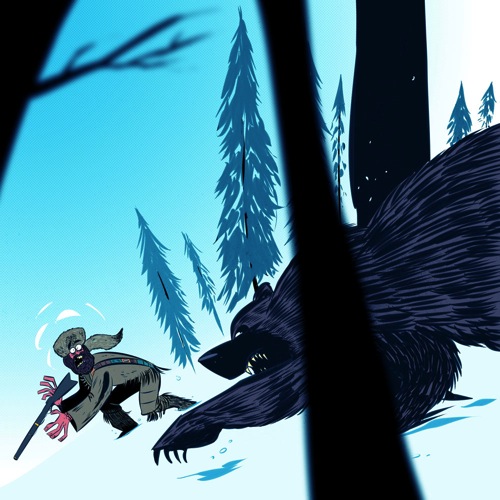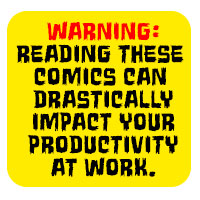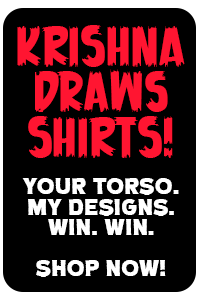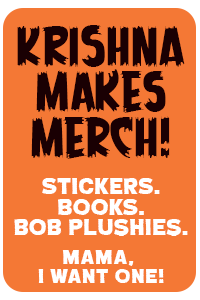Review: Pose Drawing Sparkbook
Artists go through ruts. Dry spells. Creative doldrums. The blahs. Whatever term you use to describe that feeling, it happens.
We stare at a blank sheet of paper or digital canvas, sometimes not knowing what to draw. Other times, we fall back into our comfort zone and draw the same character(s) we’ve always drawn, in the same poses. It’s similar to using the same muscle over and over again, while other muscles lay dormant.
Cedric Hohnstadt’s Pose Drawing Sparkbook is the equivalent of a cross-training workout for artists. Cedric is a professional illustrator with loads of professional experience – so he knows what he’s talking about.
Make no mistake, the Sparkbook (as it will be called throughout this review) is NOT a How to Draw book. Instead, as Cedric himself states on the back cover, it’s a “How to Think” book. This review will focus on what the Sparkbook is (and isn’t) and how it fits in with the rest of your artistic training regimen. (You are practicing, right?)
What is It?
The Sparkbook is a sketchbook with a twist. It’s available as an eBook or as a traditional ringed sketchbook (see below).
Unlike other sketchbooks, this one comes built in with content (more on that in a bit). There are over 100 acting exercises to sketch from and 32 pages of instruction and inspiration, focusing on acting and personality as it applies to drawing characters. The eBook version costs $10 and is available in PDF, iBook, Kindle and Nook flavors. There is also an expanded eBook edition which contains an additional 50 props, 50 phrases, 50 moods and emotions and 50 activities for $15.
I’m reviewing the physical copy ($25), which clocks in at 250 pages and measures 7 inches by 10 inches. The sturdy front and back cover are made with tan chip board and a metal wire-o double loop binding secures the whole book together. All in all, it’s a very solid book that should withstand the rigors of every day use.
Who Is It For?
The Sparkbook’s target audience would be intermediate to professional artists seeking to flex their artistic muscles to further grow and develop their skills. If you are new to drawing or looking for a “How to Draw” book, you’ll want to start somewhere else first.
Diving In
The foreword for the book is deftly written by Dan Haskett, who worked as a full-time character designer on The Little Mermaid. Dan reiterates the purpose of the book and the reasons why it exists.
As for the book itself, each blank two page spread contains a “spark”, or a small situation for you to illustrate. A few examples are:
Trying desperately to open a locked door that won’t budge.
At home watching a scary movie.
The idea behind the “spark” is to convey a sense of feeling within your drawings – with the goal of bringing narrative, emotion, physicality and entertainment value to the drawing you create.
There are no right or wrong drawings, but the goal with the Sparkbook is to find the most effective way to convey the “spark” with the goals described above.
The 32 pages of instruction and inspiration are split up into sections throughout the Sparkbook. They are listed as follows:
- Understanding Facial Expressions
- Posing for Clarity
- Posing with Personality
- The Big Picture
- Keep Learning and Growing
Splitting the instructional content throughout the book allows the reader to really concentrate their attention in key areas of his or her drawing. The instructional content is good and while many parts were already familiar to me, I found it to be a solid refresher. I also learned about “the Hand of Death”, which I’ve been guilty of more than a few times. Okay, a lot. For that section alone, this book was worth it. Again, the Sparkbook is meant to be a sketchbook to practice adding life and personality to your drawings. The informational content is, in my view, icing on the cake.
The back of the book contains an Appendix which lists 100 props (i.e. bucket of worms, gin bottle) and 100 phrases (i.e. Lalala I’m not listening! Fetch me my slippers) that suggest an attitude to springboard even more pose ideas.
Also included in the Appendix are a list of 100 moods and emotions to draw from, along with a section called “A Day in a Life”, focusing on 100 sparks based on situations, like waiting for the bus. Reacting to a compliment
, etc. You can mix and match the props list with the moods and emotions and situations to come up with even more idea sparks. The possibilities are endless.
My Experience with the Sparkbook
The Sparkbook is filled to the gills with some really thought-provoking ideas to sketch. The “sparks” were challenging (I’ve only drawn two so far) and took me out of my comfort zone – but this is exactly what I need, and I enjoyed rising to the challenge.
With some of the suggested “sparks”, you’ll have to act out the scenario to get into the head of the character being described. With other “sparks” you might already have a clear visual to work with. And more often than not, you’ll want to look up references to inform your poses, props and environments. I found myself doing all three.
Below is one of my completed illustrations for the “spark”:
While hunting, a pioneer mountain man is startled by a bear and drops his rifle in the snow.

Should I Buy it?
Bearing in mind the target audience for this book (intermediate and professional artists), I would say “YES”. If you’re brand new to cartooning, I’d suggest getting a few good How to Draw books first. If you’ve been around the block for a few years, the Sparkbook is just the ticket if you’ve been waiting for.
A lot of care and planning went into this book. It’s NOT just a sketchbook, it’s an inspiration engine! If you work digitally, spring the $10 and get the eBook version. If you work digital and analog, buy the print edition ($25). Honestly, even if you work digitally, buy the print edition – it’s great to have around when the drawing mood strikes.
So… How could the Sparkbook be improved? More examples in the Sparkbook itself would be nice (perhaps an addendum section featuring other professional artists and how they’ve each tackled the same exercise?). In some ways, my critique of the book is partially addressed by way of the Facebook group Cedric has set up (look up “Pose Drawing Sparkbook Gallery”).
I’m looking at this purchase (yes, I bought my copy) as an investment in my own work. No longer will I have to stare at a blank canvas and wonder what to draw when I’m stuck – I’ll have my Sparkbook at my side to help me kickstart my art.
The Pose Drawing Sparkbook earns 4.5 out of 5 Bob Weiners.








Michael Kinyon
November 17, 2013 at 10:03 amHand of Death?
Krishna M. Sadasivam
November 17, 2013 at 8:21 pmIt refers to the stock pose where the character has one arm out while standing. It doesn’t really convey any attitude – a generic pose if you will.
Michael Kinyon
November 17, 2013 at 10:47 pmOh! Yeah, I suspect almost everyone is guilty of that at some time or another.